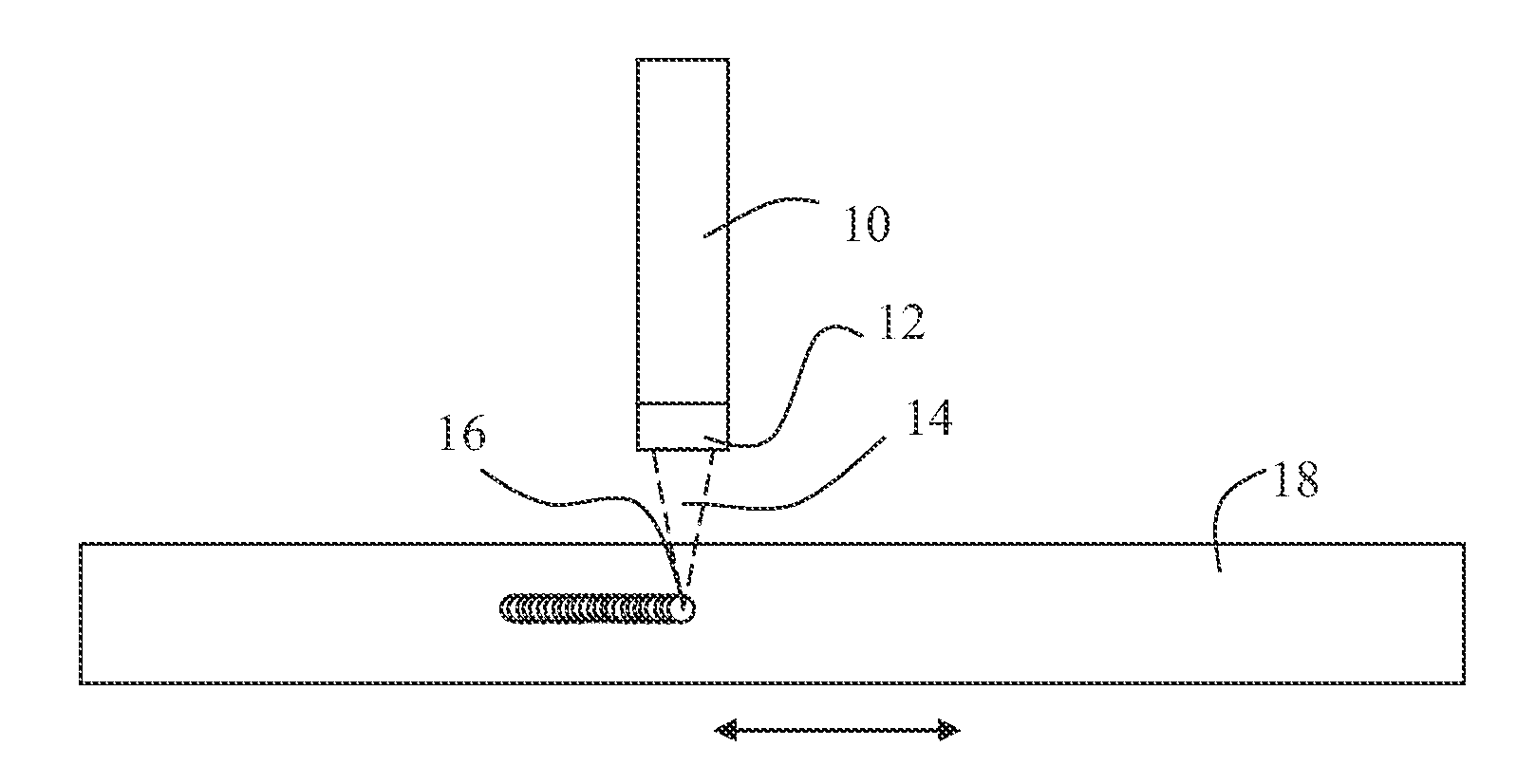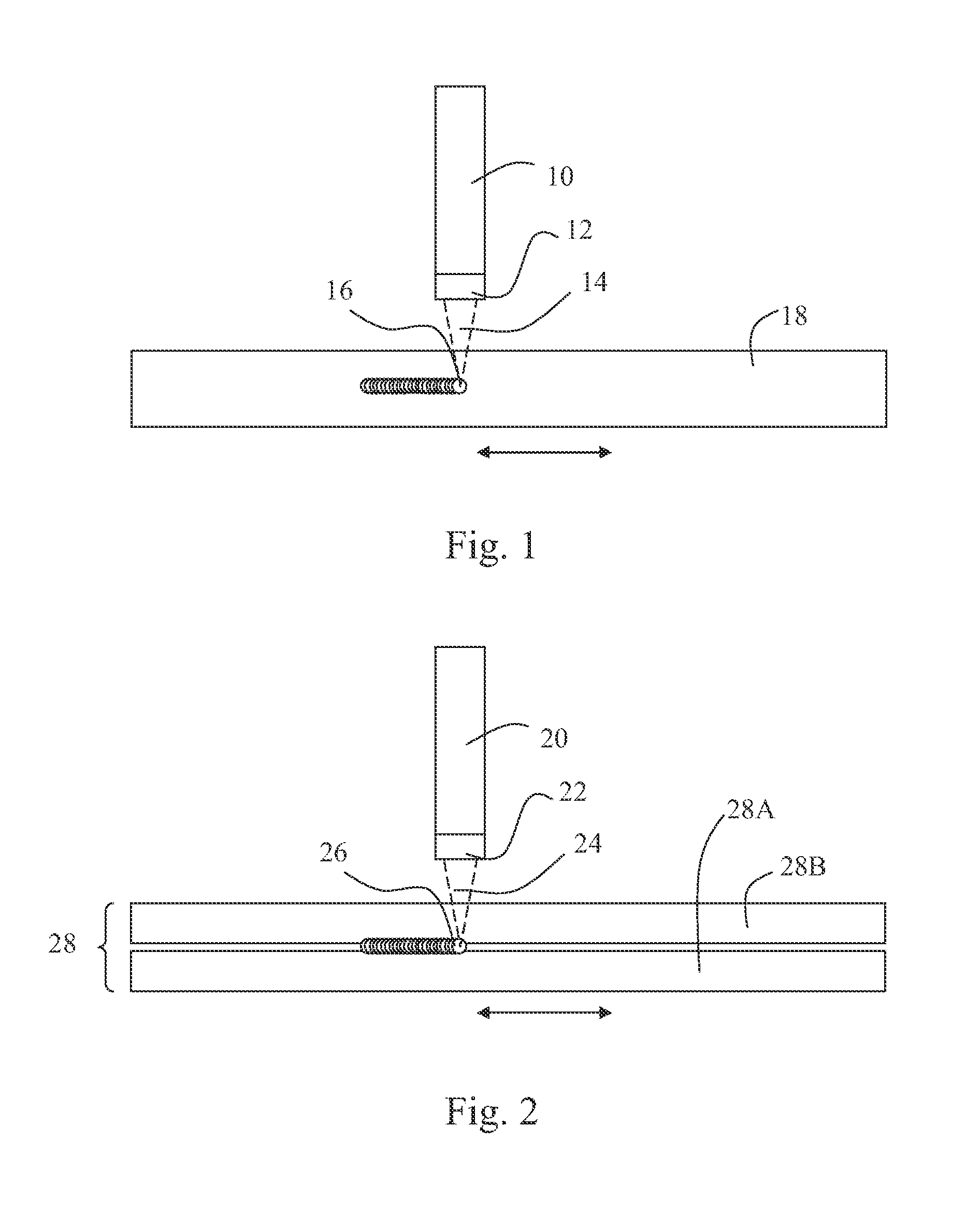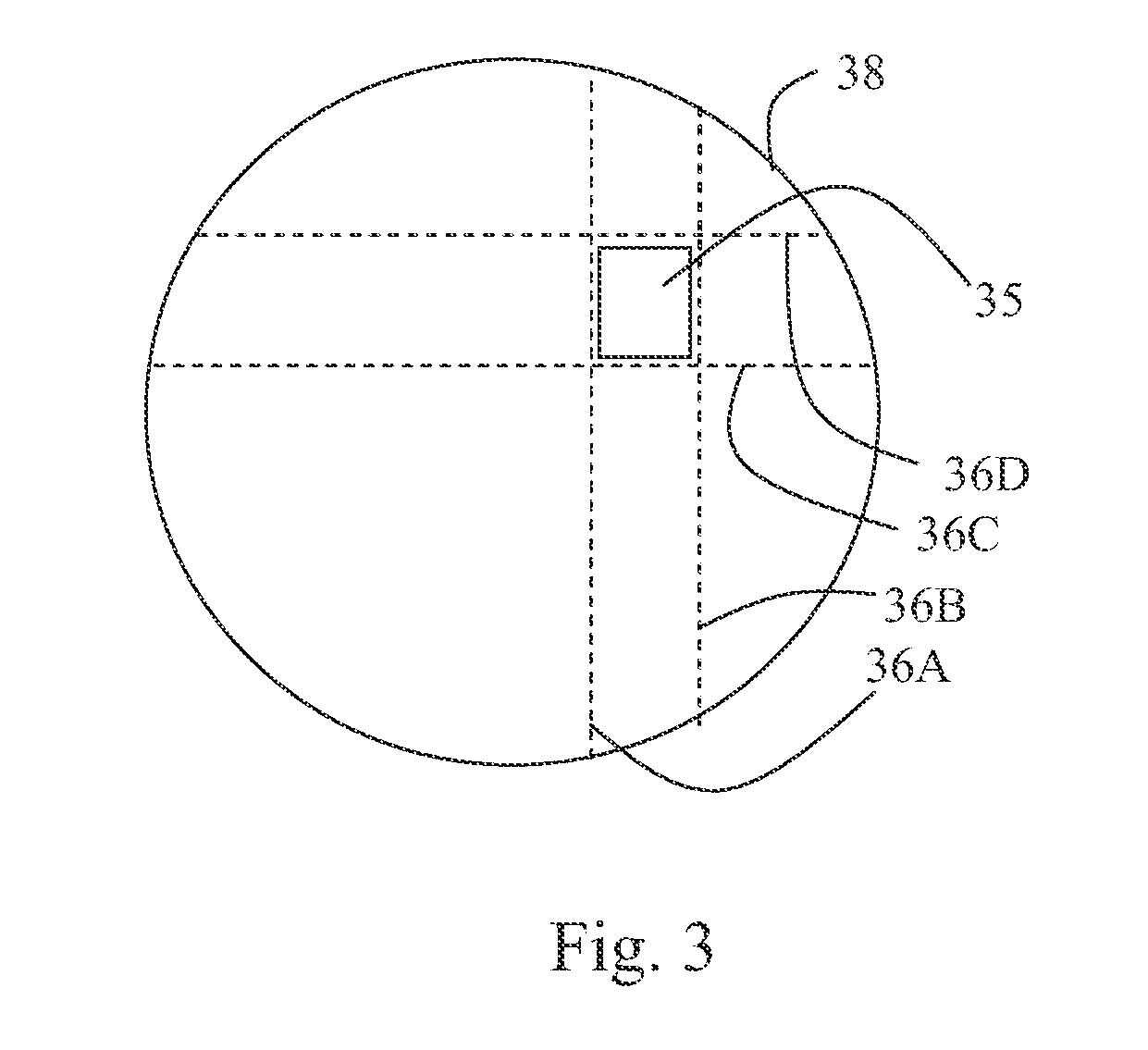Method and apparatus for processing substrates using a laser
a technology of laser processing and substrate, applied in the field of processing, can solve the problems of shock waves into materials, inability to increase the pulse energy above certain levels, and waste a large portion of semiconductor materials, and achieve the effect of high bending strength of processed components and constant processing quality in tim
- Summary
- Abstract
- Description
- Claims
- Application Information
AI Technical Summary
Benefits of technology
Problems solved by technology
Method used
Image
Examples
Embodiment Construction
[0040]The invention comprises producing to a substrate structurally modified lines using pulsed laser having a pulse duration of at least 20 ps and a pulsing frequency which is matched with processing velocity such that a plurality of the pulses synergistically increase absorption within the substrate. In particular, if the distance between successive pulses is less than ⅕ of the diameter of the focal spot of the laser beam, many enough pulses arrive to a very local region of the substrate such that the synergetic effect is ensured. In typical applications, the focal spot diameter is in the range of 1-10 μm, resulting in a typical maximum distance between pulses the range of 200 nm-2 μm.
[0041]According to one embodiment, the pulse duration used is at least 25 ps.
[0042]According to one embodiment, the pulsing frequency is increased or the moving velocity is decreased such that the distance between successive structurally modified spots is less than 1 / 10, preferably less than 1 / 20 of ...
PUM
| Property | Measurement | Unit |
|---|---|---|
| Time | aaaaa | aaaaa |
| Thickness | aaaaa | aaaaa |
| Length | aaaaa | aaaaa |
Abstract
Description
Claims
Application Information
 Login to View More
Login to View More - R&D
- Intellectual Property
- Life Sciences
- Materials
- Tech Scout
- Unparalleled Data Quality
- Higher Quality Content
- 60% Fewer Hallucinations
Browse by: Latest US Patents, China's latest patents, Technical Efficacy Thesaurus, Application Domain, Technology Topic, Popular Technical Reports.
© 2025 PatSnap. All rights reserved.Legal|Privacy policy|Modern Slavery Act Transparency Statement|Sitemap|About US| Contact US: help@patsnap.com



